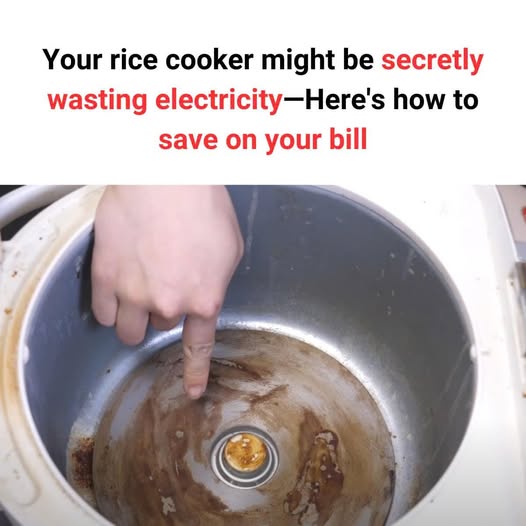ADVERTISEMENT
How to Make Your Rice Cooker More Energy-Efficient
Now that you know how rice cookers can waste electricity, it’s time to focus on ways to make sure you’re using your rice cooker in the most energy-efficient way possible. Here are some practical tips to reduce energy waste and optimize the usage of your rice cooker:
1. Use the Rice Cooker Only When Necessary
If you’re only cooking small portions of rice, consider using your rice cooker for larger batches or using alternative methods like stovetop cooking for smaller quantities. Many people use their rice cooker to make rice for a single meal, but using it only when you need to cook a full batch can be more energy-efficient.
2. Turn Off the Keep Warm Setting
Avoid leaving your rice cooker on the keep-warm function for hours after your rice is done cooking. Once your rice is cooked, transfer it to serving dishes, or store it in an airtight container in the fridge for later use. If you really want to keep it warm, you can always use a thermos or another insulated container to maintain the temperature without using electricity.
3. Choose the Right Rice Cooker
Investing in a more energy-efficient rice cooker can save you money and reduce electricity waste in the long run. Look for rice cookers with energy-saving features, such as:
- Fuzzy logic technology: These advanced models adjust cooking times and temperature settings to optimize energy usage, ensuring that your rice cooker doesn’t waste energy.
- Induction heating models: These rice cookers use induction heating, which is more energy-efficient than traditional models.
- Smaller cookers for small batches: If you typically cook small portions of rice, opt for a smaller rice cooker designed for one to two servings. It will use less energy and be more efficient than a large cooker.
4. Use the Rice Cooker Efficiently
To maximize energy efficiency when cooking rice, make sure you follow the proper water-to-rice ratio. Using too much water can cause your rice cooker to run longer than necessary, leading to extra electricity consumption. On the other hand, using too little water can result in burnt rice, requiring you to start over.
5. Pre-Soak Your Rice
Some rice cookers have a long cooking cycle, particularly for tougher types of rice. To shorten cooking times and reduce energy consumption, you can pre-soak your rice for 30 minutes before cooking. This helps the rice cook more quickly, thus saving electricity.
6. Clean the Rice Cooker Regularly
Keeping your rice cooker clean ensures it operates at peak efficiency. Over time, residue from cooked rice can accumulate on the heating plate and inside the cooker. This buildup can hinder the rice cooker’s performance, making it work harder and use more electricity. Regularly clean the cooker to prevent this from happening.
Conclusion
Rice cookers are incredibly convenient and are a wonderful addition to any kitchen. However, if you’re not mindful, they can end up using more electricity than necessary. By following the tips outlined in this article, you can make sure your rice cooker operates efficiently, saving both energy and money in the process.
The key to a more energy-efficient rice cooker is proper usage. By turning off the keep-warm setting when it’s not needed, cooking only the amount of rice required, and investing in a more efficient model, you can ensure that your rice cooker is both effective and eco-friendly.
So, the next time you use your rice cooker, remember to be mindful of how much energy it’s consuming—and make sure you’re using it in the best way possible. A little attention to detail can go a long way in keeping your home more energy-efficient and your electricity bill lower.
ADVERTISEMENT
